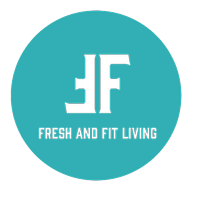Resistance Band Workouts
Muscle Activation: Resistance bands create constant tension on your muscles throughout the entire range of motion, which helps to activate and engage the targeted muscles effectively. This increased muscle activation can lead to strength gains and muscle development.
Joint-Friendly: Unlike heavy weights or machines, resistance bands provide a more joint-friendly form of resistance. They offer a smoother and more controlled resistance, reducing the risk of joint strain or injury, making them suitable for people with joint issues or those in rehabilitation.
Portability and Convenience: Resistance bands are lightweight, compact, and easy to carry, making them convenient for home workouts, traveling, or exercising in limited spaces. They are also an affordable alternative to purchasing bulky exercise equipment.
Full-Body Workouts: With resistance bands, you can perform exercises that target multiple muscle groups simultaneously. This allows for efficient full-body workouts that help improve strength, flexibility, and overall fitness.
Progressive Overload: Resistance bands provide a form of progressive resistance, where you can gradually increase the resistance as your strength improves. This progressive overload principle is essential for muscle growth and strength gains over time.
Rehabilitation and Physical Therapy: Resistance bands are commonly used in rehabilitation settings to aid in the recovery of injured muscles and joints. They provide a gentle yet effective form of resistance, helping to improve mobility, flexibility, and strength during the recovery process.
While resistance band workouts can be highly effective, it's important to note that like any form of exercise, proper technique, consistency, and progression are crucial for optimal results. It's recommended to learn the correct form and consult with a fitness professional to design a workout plan that suits your goals and fitness level.
What is resistance band training?
Resistance band training is a form of strength training that utilizes elastic bands to provide resistance during exercises. Resistance bands are typically made of rubber or latex and come in various lengths, widths, and levels of resistance. They can be flat or looped, and some bands may have handles or attachments for different exercise variations.In resistance band training, the band is anchored or held in place while you perform different exercises to work for specific muscle groups. The band creates tension and resistance, challenging your muscles as you move against it. This resistance stimulates muscle contractions and helps build strength, endurance, and flexibility.
Do resistance bands build muscle?
Resistance bands can help build muscle when used appropriately and in conjunction with a well-designed workout program. Here's how resistance bands contribute to muscle growth:1. Progressive Overload:
Muscle growth, also known as hypertrophy, occurs when muscles are subjected to progressive overload. This means gradually increasing the demand placed on the muscles over time. Resistance bands provide a form of resistance that can be progressively increased by using bands with higher levels of tension or by incorporating more challenging exercises. This progressive overload principle stimulates muscle fibers, leading to muscle adaptation and growth.
2. Muscle Activation:
Resistance bands create constant tension on the muscles throughout the entire range of motion. This increased muscle activation compared to traditional free weights can lead to greater muscle fiber recruitment and stimulation. As a result, resistance band exercises can effectively target and develop specific muscle groups.
3. Eccentric Muscle Contractions:
Resistance bands offer resistance during both the concentric (muscle shortening) and eccentric (muscle lengthening) phases of an exercise. Eccentric contractions are particularly effective for muscle growth. The resistance provided by bands during the eccentric phase creates additional muscle tension, which can enhance muscle damage and subsequent repair, contributing to muscle hypertrophy.
4. Stabilizer Muscle Engagement:
Resistance band exercises often require more stabilization and balance, as the bands can pull in various directions. This engages additional stabilizer muscles, promoting overall muscle development and enhancing functional strength.
5. Versatility of Exercises:
Resistance bands allow for a wide range of exercises targeting different muscle groups. You can perform exercises such as squats, deadlifts, rows, chest presses, bicep curls, and more using resistance bands. This versatility allows for comprehensive workouts that target various muscle groups and promote muscle growth throughout the body.
While resistance bands can be effective for muscle building, it's important to note that the extent of muscle growth may vary depending on factors such as exercise selection, intensity, volume, and individual factors like genetics and nutrition. Incorporating resistance band exercises into a well-rounded strength training program that includes progressive overload and sufficient recovery will maximize the muscle-building potential.
Benefits of resistance bands
Resistance bands offer several benefits for fitness and strength training:1. Convenience and Portability:
Resistance bands are lightweight, compact, and easy to carry, making them convenient for home workouts, travel, or exercising in limited spaces. They can be easily packed in a bag or suitcase, allowing you to maintain your workout routine wherever you go.
2. Versatility:
Resistance bands come in various levels of resistance, allowing you to adjust the intensity of your workouts based on your fitness level. They can target multiple muscle groups and can be used for a wide range of exercises, including upper-body, lower-body, and core workouts. You can perform exercises like bicep curls, tricep extensions, squats, lunges, rows, and more.
3. Joint-Friendly:
Resistance bands provide a form of resistance that is generally gentler on the joints compared to heavy weights or machines. The elastic nature of the bands offers a smoother and more controlled resistance, reducing the risk of joint strain or injury. This makes resistance band workouts suitable for people with joint issues or those in rehabilitation.
4. Progressive Overload:
Resistance bands allow for progressive overload, which is crucial for muscle growth and strength gains. As your strength improves, you can progress to bands with higher levels of resistance, providing continuous challenge and promoting muscle development.
5. Functional Strength and Stability:
Resistance band exercises often involve multiple muscle groups and require stabilization, which helps improve functional strength and stability. By engaging the stabilizer muscles, resistance bands can enhance overall coordination, balance, and joint stability.
6. Rehabilitation and Injury Prevention:
Resistance bands are commonly used in rehabilitation settings to aid in the recovery of injured muscles and joints. They provide a controlled and customizable form of resistance that can be tailored to individual needs. Resistance band exercises can help restore mobility, flexibility, and strength during the rehabilitation process.
7. Cost-Effective:
Resistance bands are generally more affordable than purchasing bulky exercise equipment or gym memberships. They offer a cost-effective way to incorporate resistance training into your fitness routine.
8. Suitable for All Fitness Levels:
Resistance bands are suitable for individuals of all fitness levels, from beginners to advanced athletes. You can easily adjust the resistance by using different bands or changing your body position to match your current strength and ability.
It's important to note that while resistance bands have numerous benefits, like any exercise, proper form, progression, and consistency are key to achieving optimal results.
Are resistance bands good for weight loss?
Resistance bands can be a valuable tool for weight loss when incorporated into a well-rounded fitness and weight loss program. Here's how they can contribute to your weight loss efforts:
1. Calorie Burning: Resistance band workouts can be intense and can elevate your heart rate, leading to increased calorie burning. When combined with a healthy diet and overall calorie deficit, resistance band exercises can contribute to weight loss by helping you expend more energy.
2. Muscle Development: Resistance band exercises promote muscle development and strength gains. Building and maintaining lean muscle mass is beneficial for weight loss because muscle tissue is metabolically active, meaning it burns more calories at rest compared to fat tissue. By increasing muscle mass through
resistance band training, you can potentially boost your metabolism and increase your overall calorie expenditure.
3. Total Body Workouts: Resistance bands allow for full-body workouts that engage multiple muscle groups simultaneously. This helps to maximize calorie burning and stimulate a higher metabolic response compared to exercises that only target specific muscles. Full-body resistance band workouts can help you achieve a higher calorie expenditure during your training sessions.
4. Cardiovascular Endurance: Some resistance band exercises can be performed in a circuit or with high-intensity intervals, which can elevate your heart rate and improve cardiovascular endurance. This can enhance your overall fitness and calorie-burning potential, contributing to weight loss.
5. Variety and Motivation: Resistance bands offer a wide range of exercise possibilities, allowing you to add variety to your workouts. This can help prevent boredom, maintain motivation, and adhere to your weight loss program.
6. Portability and Convenience: Resistance bands are lightweight, portable, and easy to use in various settings. This makes them suitable for home workouts, travel, or exercising in limited spaces. The convenience and accessibility of resistance bands make it easier to stick to your exercise routine, even when you're busy or away from a gym.
While resistance bands can be beneficial for weight loss, it's important to note that diet and overall lifestyle factors also play a significant role. Weight loss is best achieved through a combination of regular exercise, a balanced and nutritious diet, and healthy lifestyle habits.
How to start using resistance bands
To start using resistance bands effectively, follow these steps:
1. Select the Right Resistance Bands: Resistance bands come in different levels of resistance, typically categorized by color or thickness. Choose bands that provide an appropriate level of resistance for your current strength and fitness level. It's helpful to have a variety of bands with different resistance levels to accommodate various exercises and progress as you get stronger.
2. Learn Proper Form and Technique: Proper form is crucial to ensure effective and safe resistance band workouts. Seek guidance from fitness professionals or reliable online resources to learn the correct form and technique for each exercise you plan to perform. Pay attention to your posture, alignment, and movement patterns to maximize the benefits and minimize the risk of injury.
3. Start with Basic Exercises: Begin with basic resistance band exercises that target major muscle groups. This allows you to get familiar with the movements and feel the resistance provided by the bands. Some common beginner exercises include bicep curls, tricep extensions, shoulder presses, squats, lunges, rows, and chest presses. Perform each exercise with controlled and deliberate movements.
4. Warm-Up: Before starting your resistance band workout, it's essential to warm up your muscles and joints. Engage in dynamic stretches, light cardio exercises, or bodyweight movements to increase blood flow, warm up the muscles, and prepare your body for the workout.
5. Create a Workout Plan: Plan your resistance band workouts to target different muscle groups and achieve a balanced routine. Incorporate exercises that target your upper body, lower body, and core muscles. Gradually increase the intensity and difficulty of the exercises over time by using bands with higher levels of resistance or by progressing to more challenging variations of the exercises.
6. Focus on Proper Breathing: Pay attention to your breathing throughout the exercises. Exhale during the exertion phase (when you're pushing or pulling against the resistance) and inhale during the relaxation phase. Proper breathing helps maintain stability and enhances your performance during the exercises.
7. Progress Gradually: As your strength and fitness level improves, gradually increase the resistance or intensity of your resistance band exercises. This can be done by using bands with higher resistance levels, increasing the number of repetitions or sets, or incorporating more challenging variations of the exercises. Progressive overload is essential for continued improvement and muscle development.
8. Practice Consistency: Consistency is key when using resistance bands. Aim to perform resistance band workouts regularly, ideally at least two to three times per week, to see noticeable improvements in strength, endurance, and muscle development.
Remember to listen to your body, start at a comfortable level, and gradually progress as you build strength and confidence. If you're new to resistance band training or have specific fitness goals or health concerns, consider consulting with a fitness professional who can provide personalized guidance and create a workout plan tailored to your needs.
10 simple resistance band exercises
Here are ten simple resistance band exercises that target different muscle groups:1. Bicep Curls: Stand with both feet on the resistance band, holding the handles with an underhand grip. Keep your elbows close to your sides and curl your hands up towards your shoulders, contracting your biceps. Slowly lower back down and repeat.
2. Tricep Extensions: Stand on the resistance band with one foot and hold the handle with the same hand. Position your arm overhead, and with your elbow pointing forward, extend your forearm upward. Slowly lower back to the starting position and repeat. Switch sides and repeat the exercise.
3. Squats: Place the resistance band around your thighs, just above your knees. Stand with your feet hip-width apart. Keeping your chest up and back straight, lower into a squat position by pushing your hips back and bending your knees. Push through your heels to return to the starting position.
4. Glute Bridges: Lie on your back with the resistance band looped around your thighs, just above your knees. Bend your knees and place your feet flat on the floor, hip-width apart. Lift your hips off the ground, squeezing your glutes, and maintaining a straight line from your shoulders to your knees. Lower your hips back down and repeat.
5. Lat Pulldowns: Anchor the resistance band overhead, such as on a pull-up bar or secure hook. Sit or kneel beneath the anchor point and grab the band with both hands, palms facing forward. Pull the band down towards your chest, squeezing your shoulder blades together. Slowly release back to the starting position and repeat.
6. Shoulder Press: Stand on the resistance band with both feet, holding the handles at shoulder height. Press the band directly overhead, fully extending your arms. Slowly lower back down to the starting position and repeat.
7. Standing Rows: Stand with both feet on the resistance band, holding the handles in front of you with your palms facing inward. Keep your back straight and elbows close to your sides. Pull the handles towards your body, squeezing your shoulder blades together. Slowly release back to the starting position and repeat.
8. Chest Press: Anchor the resistance band at chest height, such as on a sturdy post or door handle. Stand with your back to the anchor point and hold the handles at chest level, palms facing forward. Push the handles forward, extending your arms in front of you. Slowly return to the starting position and repeat.
9. Standing Side Leg Lifts: Place the resistance band around your ankles. Stand with feet hip-width apart. Lift one leg out to the side, keeping your foot flexed and core engaged. Slowly lower the leg back down and repeat on the other side.
10. Seated Russian Twists: Sit on the ground with your legs extended in front of you and loop the resistance band around your feet. Hold the handles with both hands and lean back slightly to engage your core. Twist your torso to one side, bringing the handles towards that side. Return to the center and repeat on the other side.
Remember to maintain proper form, breathe throughout the exercises, and choose a resistance band that provides an appropriate challenge for your fitness level.



















0 Comments